In the fast-paced digital landscape, effective contentmanagement is crucial for businesses to engage and captivate their audience. This is where Headless CMS(Content Management System) emerges as a game-changer. Unlike traditional CMS platforms, Headless CMS decouples the backend content management functionality from the frontend presentation layer, providing unmatched flexibility and freedom for developers. By leveraging APIs to deliver content, Headless CMS enables seamless multi-channel distribution and empowers businesses to adapt to evolving technological trends. Let's explore how Headless CMS revolutionizes content management and unlocks new possibilities for digital experiences.
What Is A Headless CMS?
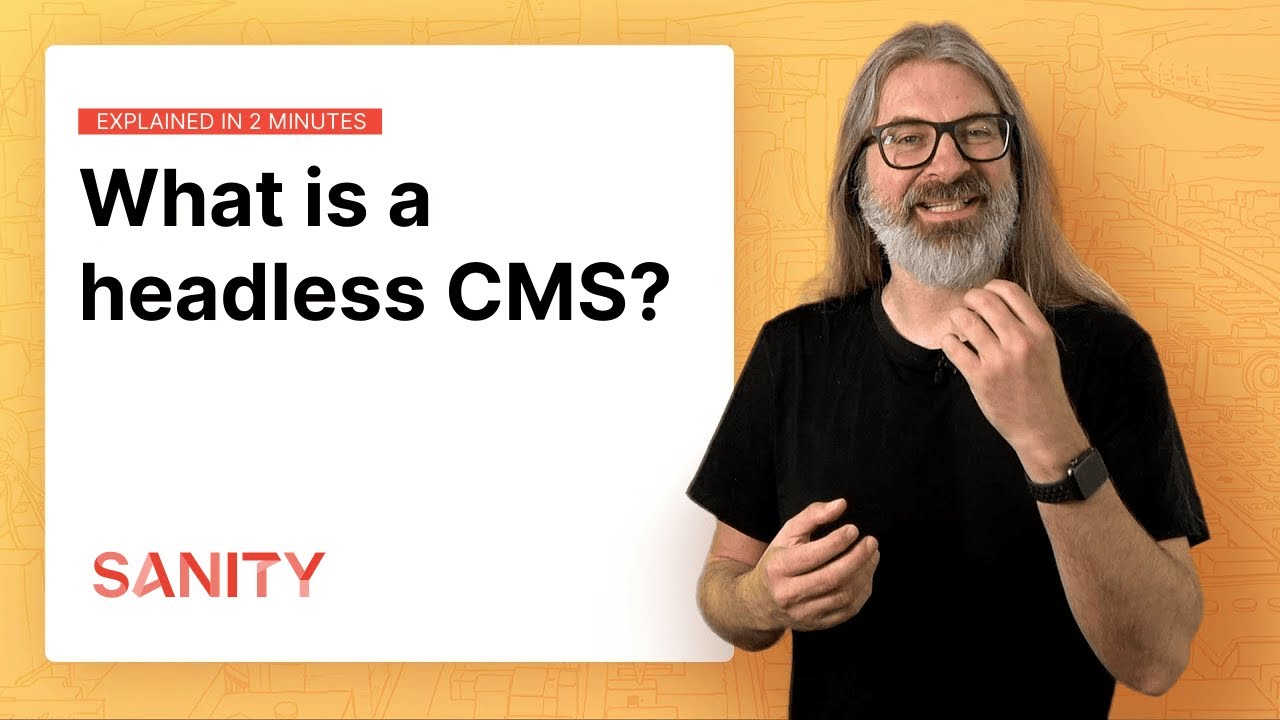
Headless CMS explained in 2 minutes
A Headless CMS, also known as a decoupled CMS, is a content management system that separates the backend content management functionality from the frontend presentation layer. Unlike traditional CMS platforms, which tightly integrate content creationand delivery, a headless CMS focuses solely on content storage, organization, and retrieval. It provides content through an API (Application Programming Interface), allowing developers to retrieve and display content on various platforms and devices, such as websites, mobile apps, IoT devices, and more.
The term "headless" refers to the removal of the front end or "head" of the application, providing flexibility and freedom to developers to create unique user experiences using the technologies and frameworks of their choice.
What Is The Purpose Of Headless CMS?

Headless CMS Explained: What is a Headless CMS? And do YOU need one?
The purpose of a Headless CMS is to provide a flexible and efficient way to manage and deliver content across multiple platforms and devices. Some key purposes of a Headless CMS include:
- Content Management -The primary purpose of a Headless CMS is to empower content creators and editors to manage content efficiently. It provides a user-friendly interface for creating, organizing, and editing content, allowing teams to collaborate effectively.
- Omnichannel Content Delivery -A Headless CMS enables content to be delivered seamlessly to various channels and devices, such as websites, mobile apps, smart devices, and more. The decoupled architecture allows for easy integration and customization, ensuring a consistent user experienceacross different platforms.
- Flexibility and Technology Independence -Headless CMS provides developers with the freedom to choose the technologies, frameworks, and programming languages best suited for their projects. This flexibility allows for innovation, faster development cycles, and the ability to adapt to emerging technologies and trends.
- Scalability and Performance -By separating the backend and frontend, a Headless CMS architecture allows for better scalability and performance optimization. It enables developers to fine-tune the server-side rendering and caching for each platform independently, resulting in faster load times and improved user experience.
- Future-Proofing -With the rapidly evolving digital landscape, Headless CMS offers a future-proof solution. It allows businesses to adapt to new technologies and platforms without requiring a complete overhaul of the content management system. Upgrades, integrations, and enhancements can be made on the front end without impacting the backend infrastructure.
Advantages Of Headless CMS

Top 10 Reasons to Choose Headless CMS over Traditional CMS
Headless CMS (Content Management System) offers several advantages that make it a popular choice for content management and delivery. Here are some key advantages of using a Headless CMS:
- Flexibility in Technology Stack -Headless CMS allows developers to choose the most suitable technologies, frameworks, and programming languages for their front-end applications. This flexibility enables innovation, faster development cycles, and the ability to leverage the latest technologies.
- Seamless Multi-channel Content Delivery -With a Headless CMS, content can be easily delivered to various channels and devices, including websites, mobile apps, IoT devices, digital signage, and more. The API-driven approach ensures consistent content updates across different platforms, providing a unified user experience.
- Enhanced Performance and Scalability -Headless CMS architectures are designed for scalability and performance optimization. Separating the front end and back end allows for independent optimization of server-side rendering and caching, resulting in faster load times, improved user experience, and the ability to handle high-traffic loads effectively.
- Ease of Content Management -Headless CMS platforms typically provide user-friendly interfaces for content creation, organization, and editing. Content creators and editors can work collaboratively, streamlining the content management process and enhancing workflow efficiency.
- Future-Proofing and Adaptability -Headless CMS architectures are inherently flexible and adaptable to evolving technologies and trends. Businesses can easily integrate new platforms, channels, or technologies without disrupting the existing infrastructure. This future-proofing capability ensures that the content management system remains relevant and scalable over time.
- Separation of Concerns -The separation of frontend and backend concerns in a Headless CMS allows developers and content creators to focus on their respective areas of expertise. Developers can concentrate on creating engaging user interfaces, while content creators can focus on producing quality content. This separation improves collaboration and overall efficiency.
- Improved Security:Headless CMS architectures often prioritize security by design. Separating the content management system from the front end reduces potential attack vectors and allows for dedicated security measures on each layer. This helps protect valuable content and user data.
In conclusion, the advantages of Headless CMS include flexibility in technology choice, seamless multi-channel content delivery, enhanced performance and scalability, ease of content management, future-proofing capabilities, separation of concerns, and improved security. These advantages make Headless CMS a powerful solution for managing and delivering content in the digital era.
How Does A Headless CMS Work?
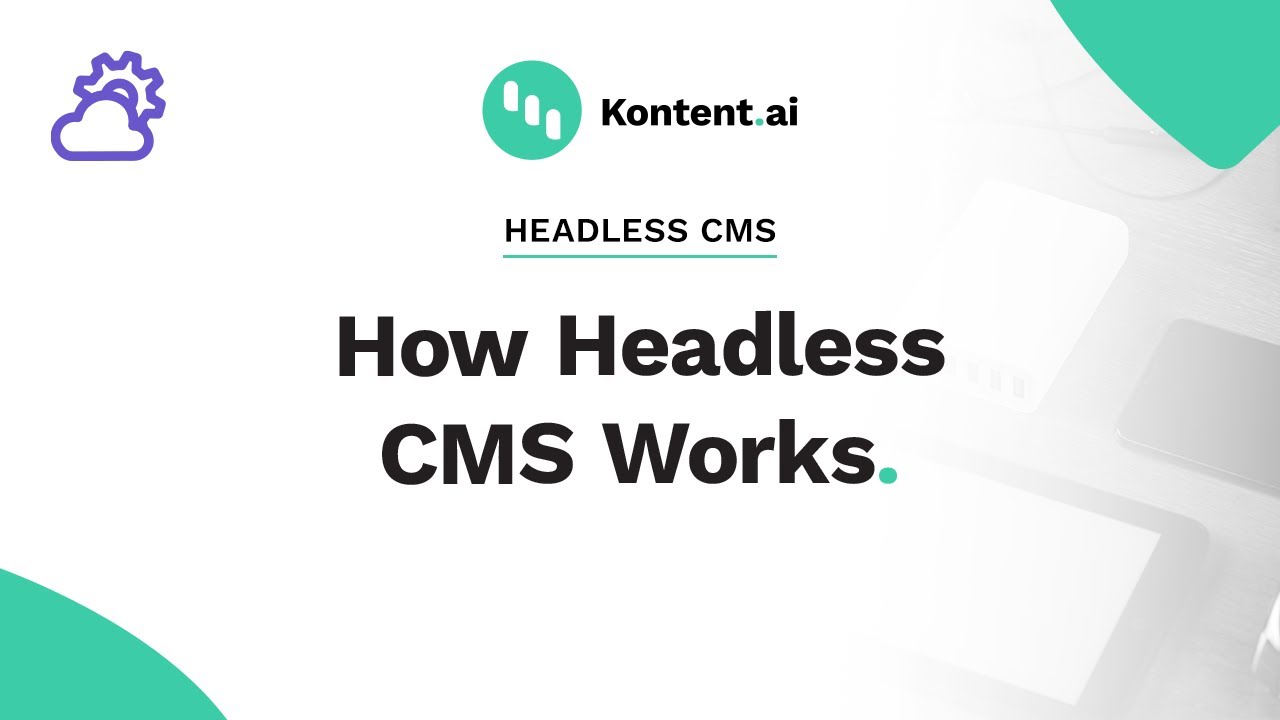
How Headless CMS works
A Headless CMS (Content Management System) operates differently from traditional CMS platforms by separating the backend content management functionality from the frontend presentation layer. Here's an overview of how a Headless CMS works:
- Content Creation and Management -In a Headless CMS, content creators, and editors use a user-friendly interface to create, organize, and manage content. They can create content in various formats, such as text, images, videos, or structured data.
- Content Storage and Organization -The content is stored in a database or content repository within the Headless CMS. Unlike traditional CMS platforms, which often have predefined content structures, a Headless CMS offers more flexibility in how content is organized and structured.
- API-driven Content Delivery - Instead of rendering and delivering content directly to a specific frontend platform, a Headless CMS delivers content through APIs (Application Programming Interfaces). APIs act as a bridge between the backend CMS and the frontend applications, allowing them to request and retrieve content as needed.
- Frontend Development and Integration - With a Headless CMS, developers have the freedom to choose the frontend technologies, frameworks, and programming languages that best suit their project requirements. They build the user interface and frontend applications independently of the CMS, using APIs to fetch content from the Headless CMS.
- Multi-channel Content Delivery -The decoupled nature of a Headless CMS enables content to be delivered to various platforms and devices, such as websites, mobile apps, IoT devices, or digital signage. The APIs facilitate seamless integration between the Headless CMS and the different front-end applications, ensuring consistent content updates across channels.
- Dynamic Content Updates -As content is managed within the Headless CMS, any updates or changes made by content creators or editors are reflected in real-time across all connected frontend applications. This dynamic content delivery ensures that users always receive the most up-to-date information.
- Workflow and Collaboration -Headless CMS platforms often provide features for workflow management and collaboration. Content creators, editors, and developers can work simultaneously, leveraging their respective tools and workflows. This collaborative approach streamlines the content management process and promotes efficient teamwork.
When To Use A Headless CMS?
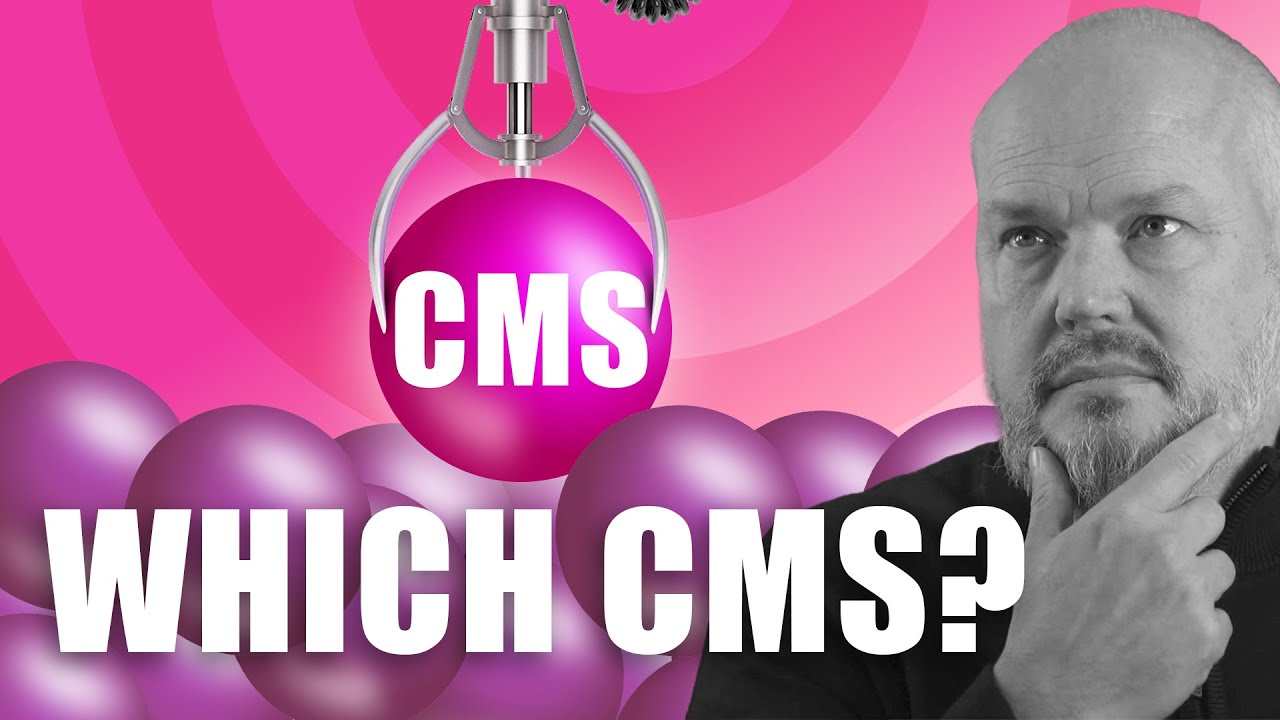
When To Choose A Headless CMS
A Headless CMS (Content Management System) is a suitable choice in several scenarios where flexibility, scalability, and multi-channel content delivery are key considerations. Here are some situations when using a Headless CMS is advantageous:
- Multiple Platforms and Devices -When content needs to be delivered to various platforms and devices such as websites, mobile apps, IoT devices, digital signage, or even emerging technologies, a Headless CMS allows for seamless multi-channel content delivery. It ensures consistent content updates and a unified user experience across different touchpoints.
- Customized User Experiences -If you require highly customized and unique user experiences, a Headless CMS provides the flexibility to choose the front-end technologies and frameworks that best align with your vision. It allows developers to build bespoke user interfaces and leverage the latest technologies to create innovative digital experiences.
- Complex Content Structures -In cases where content has complex structures or requires different presentation formats across platforms, a Headless CMS offers the freedom to organize and structure content independently of the front end. This flexibility enables better management of diverse content types and structures.
- Scalability and Performance -When scalability and performance optimization are crucial, a Headless CMS architecture allows for independent optimization of server-side rendering and caching. This results in faster load times, improved performance, and the ability to handle high-traffic loads without compromising content delivery.
- Integration with Existing Systems -If you already have existing systems or applications and need to integrate a CMS seamlessly, a Headless CMS can be a suitable choice. It provides APIs that enable easy integration with existing systems, allowing you to leverage the CMS's content management capabilities without disrupting your current infrastructure.
- Collaboration and Workflow Efficiency -When collaboration among content creators, editors, and developers is important, a Headless CMS with workflow features can streamline the content creation process. It allows different teams to work simultaneously, leveraging their specialized tools and workflows, thus enhancing collaboration and workflow efficiency.
- Future-Proofing and Adaptability -If you anticipate the need to adapt to future technologies, channels, or devices, a Headless CMS offers future-proofing capabilities. It enables you to integrate new platforms or technologies without requiring a complete overhaul of the content management system, providing scalability and adaptability.
How To Choose The Right Headless CMS?
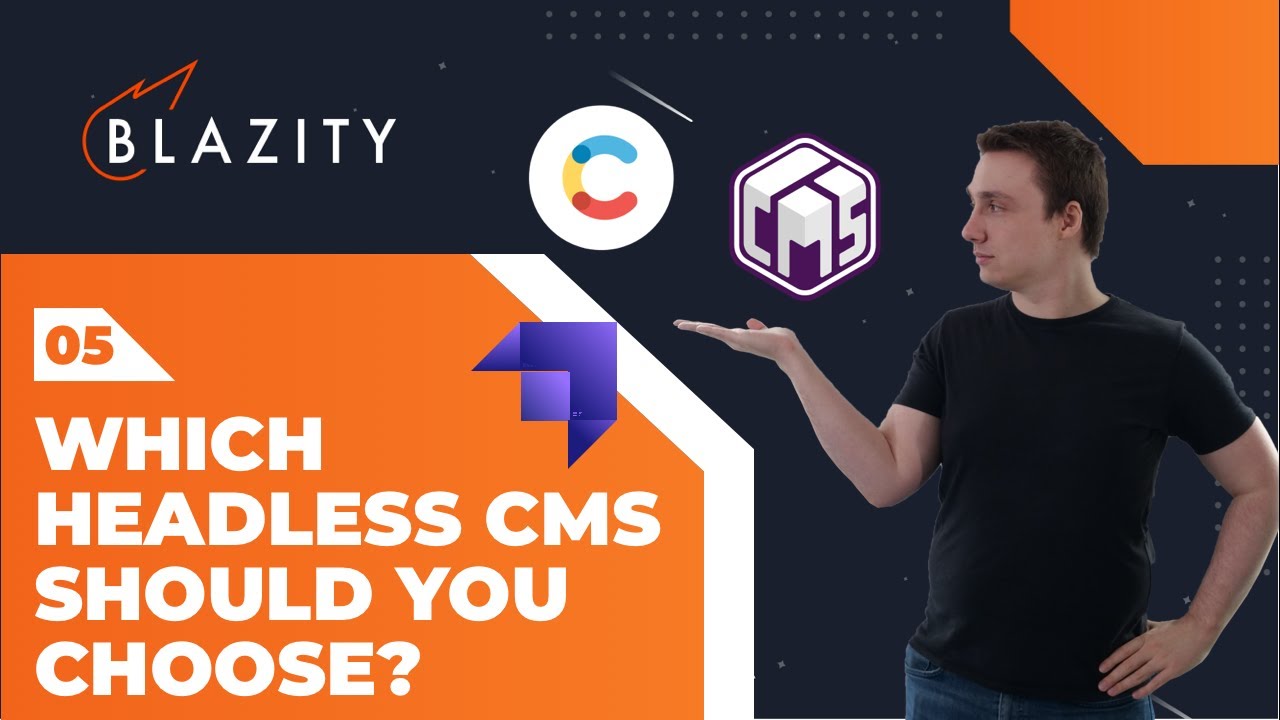
Which Headless CMS should you choose? (Short market overview in 2021)
Choosing the right Headless CMS (Content Management System) for your needs requires careful consideration of various factors. Here's a step-by-step guide to help you choose the right Headless CMS:
- Identify Your Requirements -Start by identifying your specific content management and delivery requirements. Consider factors such as the types of content you need to manage, the number of platforms you want to support, collaboration and workflow needs, scalability requirements, and any specific integrations you require.
- Evaluate Flexibility -Assess the flexibility of the Headless CMS in terms of the technology stack. Consider whether it supports the programming languages, frameworks, and tools that align with your development team's skills and preferences. Ensure that the CMS allows you to build the desired user experiences without limitations.
- Consider Content Structure and Management -Evaluate how the Headless CMS handles content structure and management. Does it provide a user-friendly interface for content creation, organization, and editing? Can you easily define custom content models and relationships? Consider the ease of managing complex content structures that align with your project requirements.
- API Capabilities -Examine the capabilities of the CMS's APIs. Ensure that the CMS provides robust and well-documented APIs for retrieving and manipulating content. Consider factors such as performance, security, versioning, and caching mechanisms to ensure efficient and reliable content delivery.
- Scalability and Performance -Evaluate the scalability and performance capabilities of the Headless CMS. Consider how it handles high traffic loads and whether it offers features such as CDN integration or caching mechanisms to optimize content delivery. Look for case studiesor performance benchmarks to gauge its scalability and performance track record.
- Integration Options -Assess the CMS's integration capabilities. Determine if it provides out-of-the-box integrations with the platforms and systems you currently use or plan to incorporate. Consider whether it supports popular third-party services, APIs, or webhooks to streamline integrations.
- Security and Compliance -Evaluate the security features and measures provided by the Headless CMS. Look for features such as user access controls, data encryption, backup and recovery options, and compliance with industry standards (e.g., GDPR, HIPAA). Consider the CMS's reputation and track record regarding security vulnerabilities and how promptly they address security issues.
- Support and Documentation -Assess the level of support and documentation provided by the CMS vendor. Look for comprehensive documentation, developer resources, tutorials, and a responsive support system to assist you in troubleshooting issues or implementing complex functionalities.
- Consider Pricing and Scalability- Take into account the pricing structure of the Headless CMS and how it aligns with your budget. Consider whether the pricing scales with your needs as your content and traffic grow. Evaluate the value provided by the CMS in terms of features, support, and scalability.
- User Experience and Reviews -Finally, gather feedback and reviews from users who have experience with the Headless CMS. Read online reviews, join relevant communities or forums, and seek recommendations from trusted sources. This will help you gain insights into the user experience, reliability, and overall satisfaction with the CMS.
Use Cases For Headless CMS
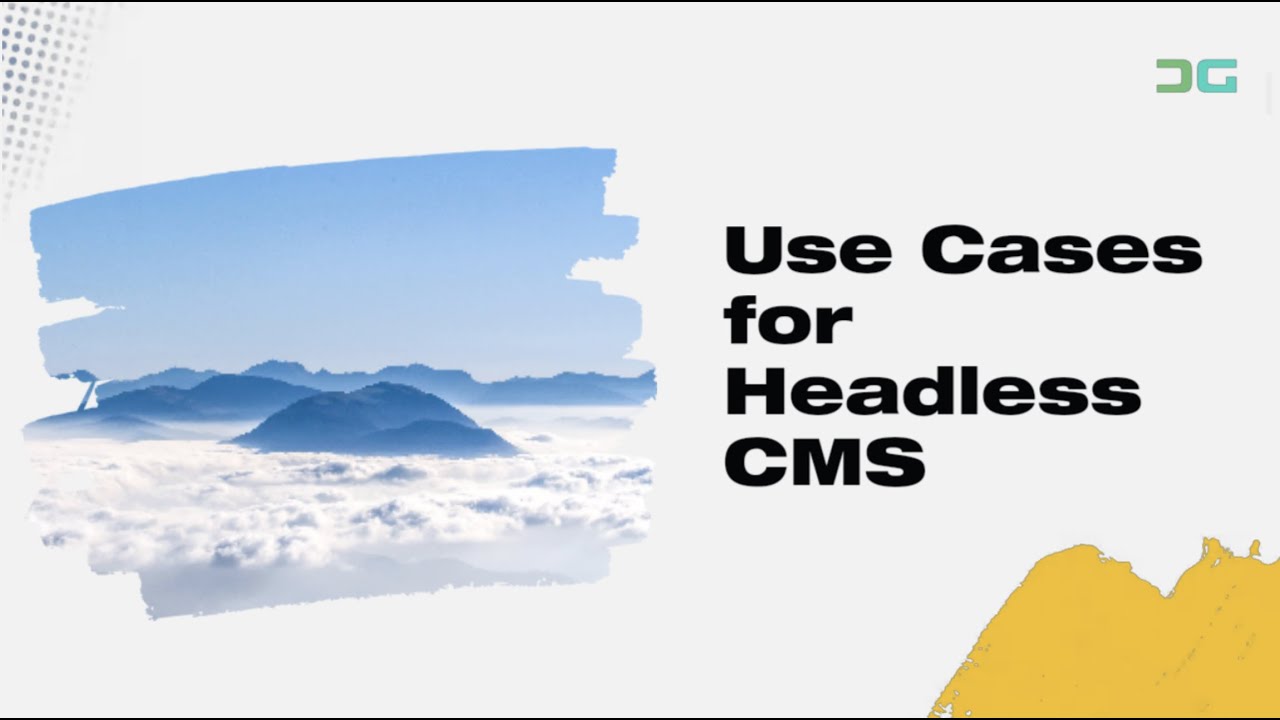
Headless CMS Series 3/4 : Use Cases for Headless CMS
Headless CMS (Content Management System) platforms are versatile and applicable to a wide range of use cases across industries. Here are some common use cases where a Headless CMS can be beneficial:
- Websites and Blogs -Headless CMS is an ideal solution for managing content for websites and blogs. It allows content creators to easily create and publish articles, blogs, and other web content while providing developers with the flexibility to build custom front-end experiences.
- Mobile Applications -Headless CMS enables seamless content delivery to mobile applications. It allows developers to fetch and display content from the CMS through APIs, ensuring real-time updates and a consistent user experience across iOS and Android platforms.
- IoT Devices -Internet of Things (IoT) devices, such as smart displays, wearables, and digital signage, often require dynamic and contextual content. Headless CMS can centrally manage and distribute content to these devices, providing real-time updates and personalized experiences.
- E-commerce Platforms -Headless CMS is well-suited for managing product catalogs, content, and promotions on e-commerce platforms. It enables businesses to deliver consistent product information across various channels, including websites, mobile apps, and other sales touchpoints.
- Digital Publications -Online magazines, news portals, and other digital publications can leverage Headless CMS to manage and deliver their content efficiently. It enables content creators to produce articles, news stories, and multimedia content while offering developers the freedom to design unique user experiences.
- API-driven Applications -Headless CMS can serve as a content repository for various API-driven applications. It allows developers to retrieve and consume content from the CMS via APIs, enabling them to create custom applications or integrate content into existing systems.
- Multilingual and Multiregional Content -For businesses with a global presence, Headless CMS can efficiently manage multilingual and multiregional content. It provides the flexibility to organize and deliver content based on different languages, regions, or locales, ensuring localized experiences.
- Collaborative Content Creation -Headless CMS platforms offer collaboration features that facilitate teamwork among content creators, editors, and stakeholders. They can work simultaneously, manage content workflows, review and approve content, improving collaboration and content management efficiency.
- Progressive Web Applications (PWAs) -Headless CMS can power content management for Progressive Web Applications, which provide a native-like experience on the web. It allows developers to fetch content through APIs, enabling dynamic updates and offline access.
- API-first Architectures -Organizations adopting an API-first architecture can benefit from Headless CMS, as it aligns with the decoupled nature of the system. It allows them to manage content independently from the presentation layer and integrate content seamlessly into various applications and services.
Headless CMS Mistakes To Avoid
When implementing a Headless CMS (Content Management System), it's important to be aware of potential mistakes that can hinder its effectiveness. Here are some common mistakes to avoid:
- Lack of Planning and Strategy -Implementing a Headless CMS without a clear plan or strategy can lead to inefficiencies and difficulties down the line. Define your content management goals, understand your requirements, and create a roadmap for implementation to ensure a successful and smooth transition.
- Choosing the Wrong CMS -Selecting the wrong Headless CMS that doesn't align with your specific needs and requirements can be a significant mistake. Thoroughly research and evaluate different CMS options, considering factors such as flexibility, scalability, ease of use, and developer support, before making a decision.
- Poor Content Modeling -Inadequate content modeling can impact the organization and structure of your content, leading to difficulties in content management and retrieval. Take the time to properly define content models and relationships, ensuring they align with your content types and desired presentation formats.
- Ignoring API Design and Documentation -Neglecting API design and documentation can hinder the integration and usability of the Headless CMS. Pay attention to designing clean and well-documented APIs, ensuring they are intuitive and easily understandable by developers who will be consuming the content.
- Insufficient Developer Training and Support -Inadequate training and support for developers who will be working with the Headless CMS can lead to frustration and suboptimal implementation. Provide sufficient training, resources, and ongoing support to empower developers to leverage the CMS effectively.
- Overlooking Security and Authorization -Failing to prioritize security measures can expose your content and data to vulnerabilities. Implement robust security measures, including user authentication, access controls, encryption, and secure APIs, to protect sensitive information and ensure compliance with industry standards.
- Ignoring Performance Optimization -Performance optimization is crucial for delivering a fast and seamless user experience. Neglecting performance optimization, such as caching strategies, image optimization, and server-side rendering, can lead to slow load times and negatively impact user engagement.
- Underestimating Content Governance - Without proper content governance, content quality can suffer, leading to inconsistencies, outdated information, and an overall poor user experience. Establish content governance processes, guidelines, and workflows to ensure content accuracy, relevance, and consistency.
- Failing to Test and Iterate -Launching a Headless CMS without proper testing and iteration can result in undiscovered issues and missed opportunities for improvement. Test the CMS thoroughly, gather feedback from content creators, editors, and end-users, and iterate based on their input to refine and optimize the system.
- Not Monitoring Analytics and Performance - Neglecting to monitor analytics and performance metrics can hinder your ability to make data-driven decisions and optimize the CMS. Implement analytics tracking, regularly analyze metrics, and use the insights to identify areas for improvement and make informed content management decisions.
People Also Ask
What Is The Difference Between A Traditional CMS And A Headless CMS?
Traditional CMS tightly couples the backend content management and frontend presentation layers, while headless CMS separates them, allowing more flexibility in technology choice and content delivery.
How Does A Headless CMS Improve Website Performance?
Headless CMS improves website performance by allowing developers to optimize server-side rendering and caching separately, resulting in faster load times and improved user experience.
Can A Headless CMS Be Integrated With Existing Websites?
Yes, a headless CMS can be easily integrated with existing websites. Its API-driven approach enables developers to fetch and display content on any platform or front-end application.
Does Using A Headless CMS Impact SEO?
Using a headless CMS does not inherently impact SEO. With proper implementation, SEO-friendly URLs, metadata, and structured data can be managed efficiently, ensuring search enginevisibility.
Conclusion
As the digital landscape evolves, businesses must embrace innovative approaches to content management. Headless CMS offers the freedom to choose the most suitable technology stack and empowers developers to create engaging user experiences. Whether it's websites, mobile apps, IoT devices, or e-commerce platforms, adopting a Headless CMS positions businesses at the forefront of content management, enabling them to thrive in the dynamic digital era. Embrace the power of Headless CMS and unlock the full potential of content management in your digital endeavors.